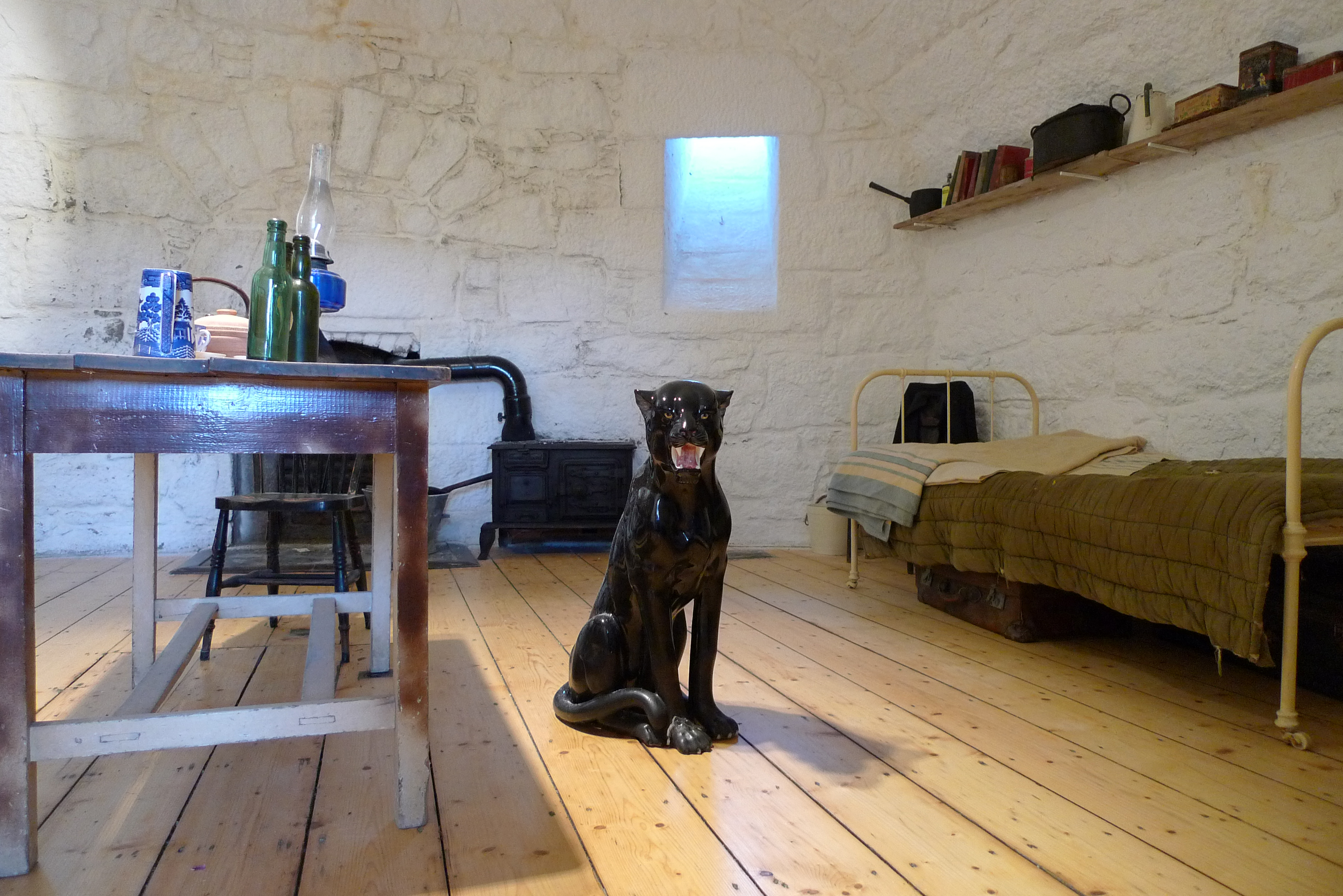 |
| The table is laid in the James Joyce Tower. |
The pot-oven in the Joyce Tower is about the size of a cantaloupe. It has a lid with a knob handle. It is unglazed clay, and would have been set in the embers of the fire for cooking, but I hadn't figured that out yet.
 |
| See Chapter 1 of Ulysses for a reference to the panther. |
It wasn't until a few days later, when our class read J. M. Synge's play, "Riders to the Sea," that I realized I was looking at a pot-oven: a crock for cooking Irish Soda Bread. Synge sets the scene in his play with ordinary kitchen objects: "Cathleen, a girl of about twenty, finishes kneading cake, and puts it down in the pot-oven by the fire." The pot-oven, and the soda bread baking inside it, are important links to hospitality, an idea that figures prominently in Irish literature. Darina Allen, an Irish celebrity chef tells us that baking bread was, and still is, a daily custom in Ireland. She gives us her recipe, and tells us that it only takes a few minutes to mix, and 20-30 minutes to bake.
In Synge's play, bad stuff happens when you don't tend your pot-oven, and the bread inside it closely enough. In "Riders to the Sea," the women are in charge of the hearth, the pot-oven, and the baking. I don't remember any reference to the pot-oven in Joyce's Ulysses, but seeing it on the table there in that cozy room made me wonder whether Buck Mulligan made the bread himself when he called Kinch and Haines to breakfast.
No comments:
Post a Comment